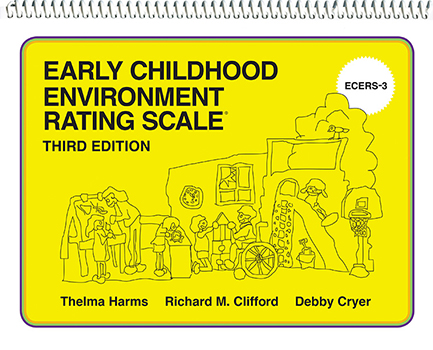
The original ECERS (Harms & Clifford, 1980) contained 37 Items organized in 7 Subscales. Each Item was presented as a 7-point Likert Scale with four quality levels, each level defined by a descriptive paragraph. The ECERS-R™ Edition (Harms, Clifford, & Cryer, 1998,) consisted of 43 Items organized in 7 subscales. In the Revised Edition, each level of each Item was defined by numbered Indicators, thus making it possible to more clearly assign scores and to use the assessment to more precisely guide program improvement. The ECERS-R™ Updated version (Harms, Clifford, & Cryer, 2005) contained the same 43 Items and Subscales, but with greatly expanded notes for clarification and an expanded Scoresheet. It is this updated ECERS-R™ version that we used as the basis for the completely revised Third Edition. We have maintained the use of Indicators evaluated on the basis of classroom observation, but have significantly revised the Indicators and the Items they comprise in order to reflect current knowledge and practice in the field.
In terms of scoring the ECERS-3™, we have maintained the basic approach of scoring the set of Yes/No Indicators of quality and basing the 1–7 point Item scores on the Indicator scores. In addition, we have maintained six of the seven subscales from ECERS-R™, eliminating the Parents and Staff subscale because of limited variation in scores and the complete dependence of scoring on teacher reports rather than observation. A total score is also calculated in the same manner as in ECERS-R™. Further, we now recommend that all Indicators be scored regardless of the Item score in order to provide a more complete view of quality. In the near future we will provide online access to a new scoring system similar to the newly released scoring program for ECERS-R™.
The combination of continuity and innovation has enabled the ECERS to serve as the most widely used early childhood environment quality assessment instrument in the United States and worldwide—used in more than 20 countries and formally published in 16 of those countries, with additional translations currently underway.
